The Ultimate Guide to Bathroom Tiles
From bold layouts to timeless neutrals, find your perfect tile.
If so, you’ll be in safe hands with Adamson’s. Got a question, want an idea of price or ready to book your FREE home design visit?

Tiles do more than protect your walls and floors, they shape the entire look and feel of your bathroom. Whether you’re after classic elegance, something bold and textured, or a calming spa-like retreat, your choice of tile will set the tone. Here’s everything you need to know before choosing yours.
Trends come and go, but right now, we’re seeing:
1. Textured and 3D Tiles
Ridges, ripples and sculpted surfaces add subtle depth, especially when paired with soft lighting.
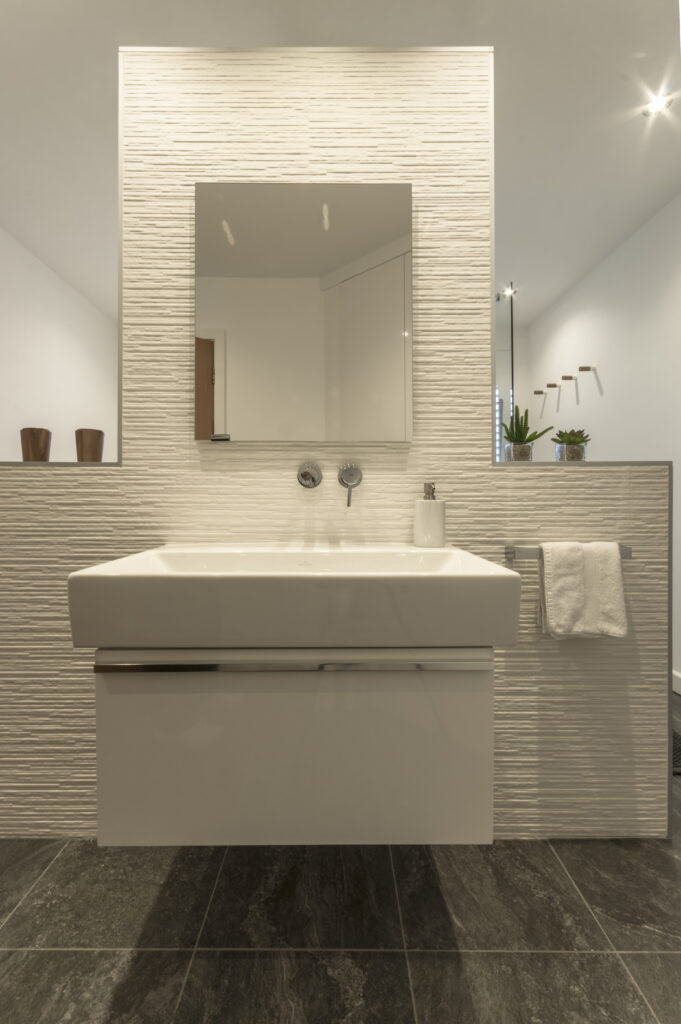
2. Large-Format Slabs
Tiles that mimic stone or marble in oversized formats are big for luxury, seamless finishes.
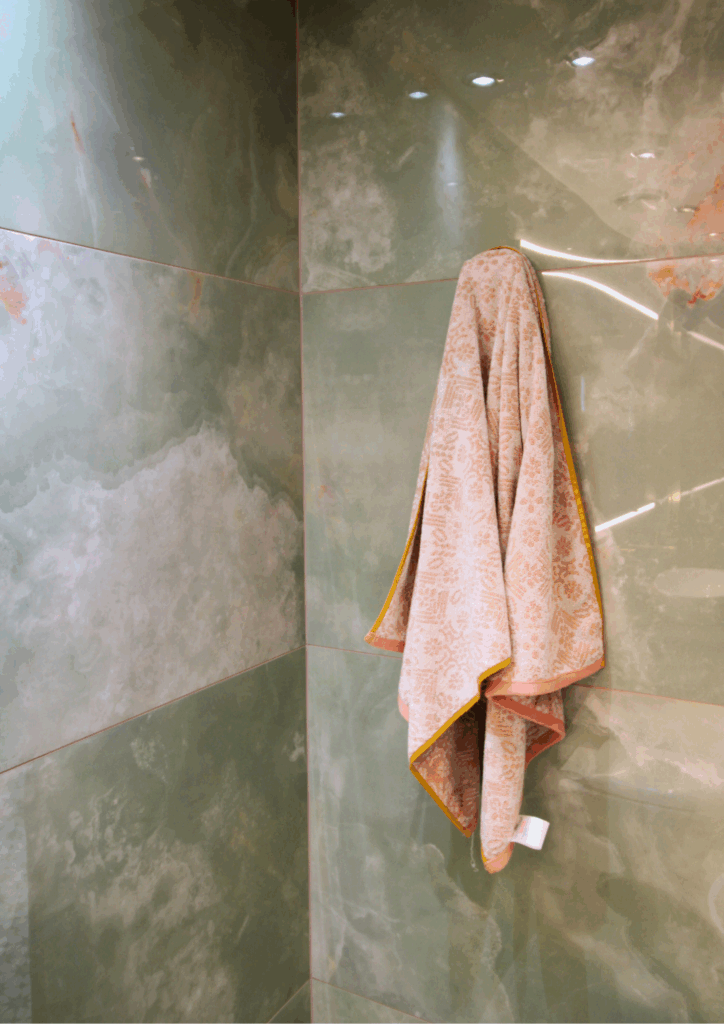
3. Earthy, Warm Tones
Think terracotta, sage, and soft sandy neutrals — perfect for that organic, spa-style bathroom.
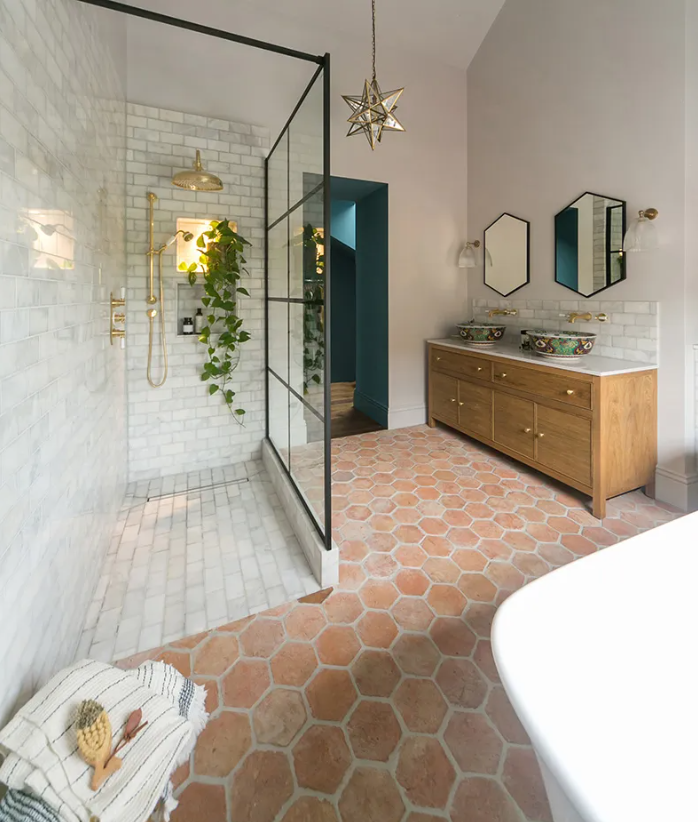
4. Zellige and Handmade-Effect Tiles
Glazed, perfectly imperfect tiles that reflect light and bring charm to any wall.
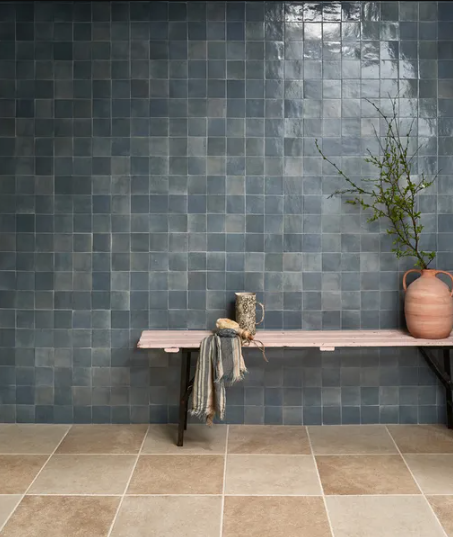
Image Credit: Ca’Pietra Maroc Porcelain Powder Blue
5. Patterned Tiles
Victorian-inspired prints, Moroccan motifs, or geometric repeats — patterned tiles are making a strong comeback. They’re perfect for adding character to a floor, behind a basin, or in a shower recess. Use them as a feature paired with plainer tiles to keep things balanced.
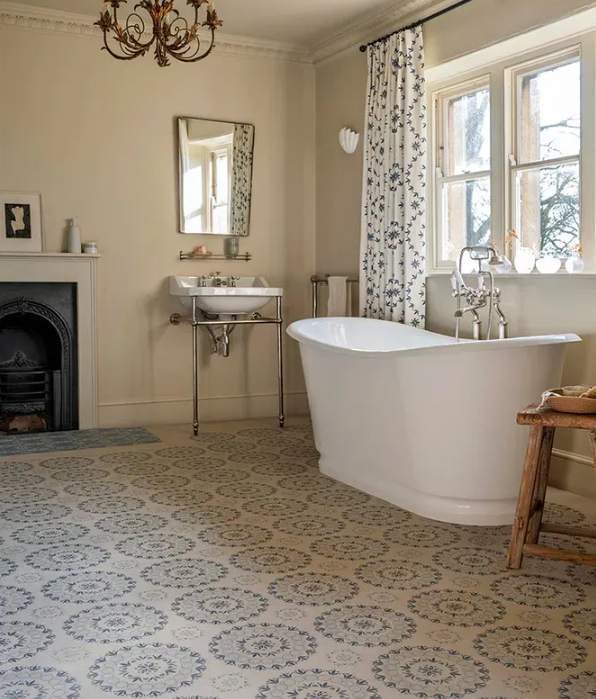
Image Credit: Ca’Pietra Aventuras Palma Blue Porcelain
Tile size has a huge impact on how your bathroom feels. Here’s how to choose wisely:
Large tiles can actually make a compact space feel bigger by reducing the number of grout lines. Go for 600x600mm or longer-format wall tiles.
Avoid tiny mosaics unless used as an accent. Too many lines can make the space feel busy.
Vertical layouts or slim rectangular tiles can help draw the eye upwards, adding height.
Play with contrast by combining large floor tiles with smaller feature tiles on walls or in niches.
Zoning with different tile styles can help define areas — for example, a different tile behind the vanity or in the shower area.
Neutral & Timeless:
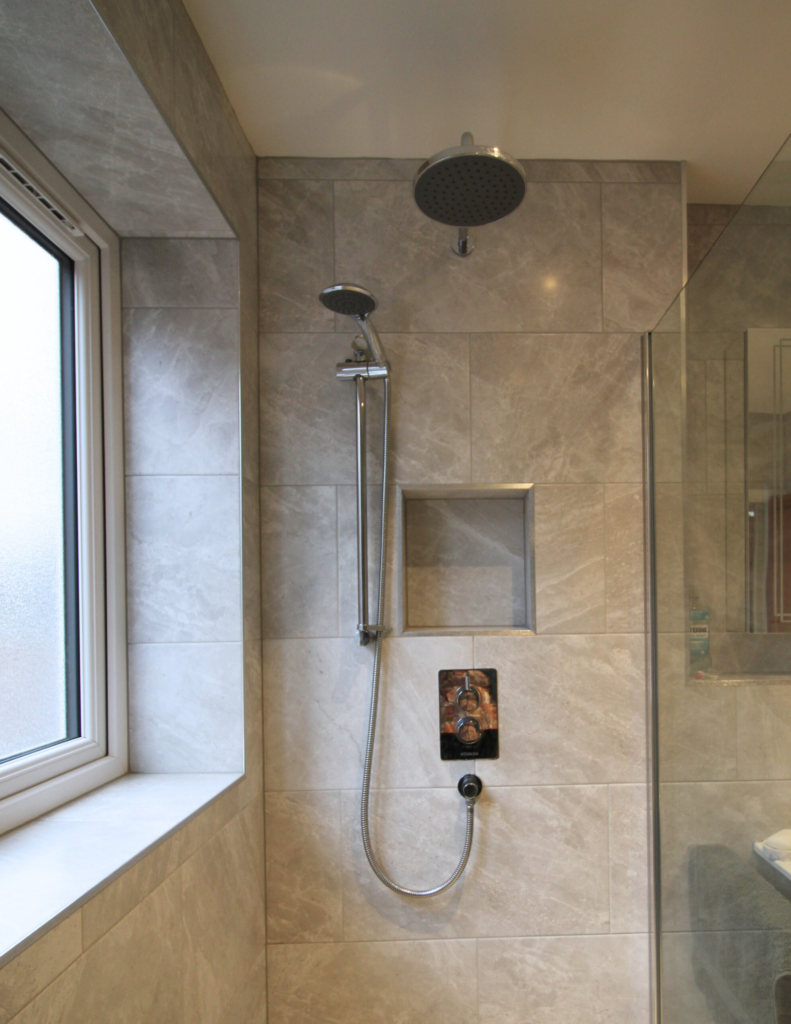
White, cream, beige, and grey are always popular for a clean, calming finish.
Pair warmer tones with brass and cooler tones with chrome or black fixtures.
Bold & Beautiful:
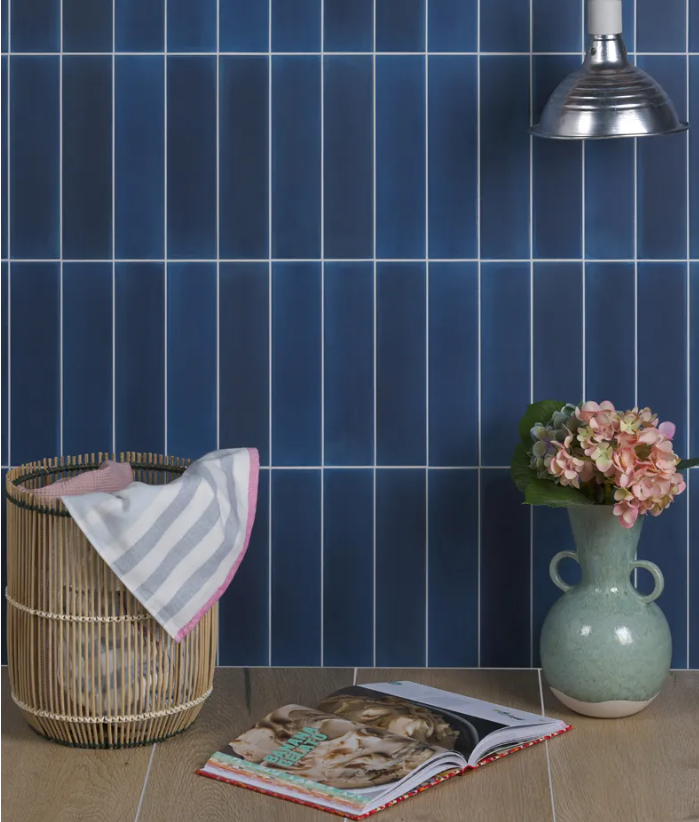
Deep navy, emerald green and terracotta work beautifully in statement bathrooms.
Use them on a single feature wall or as a floor tile with neutral walls.
Dark & Moody:
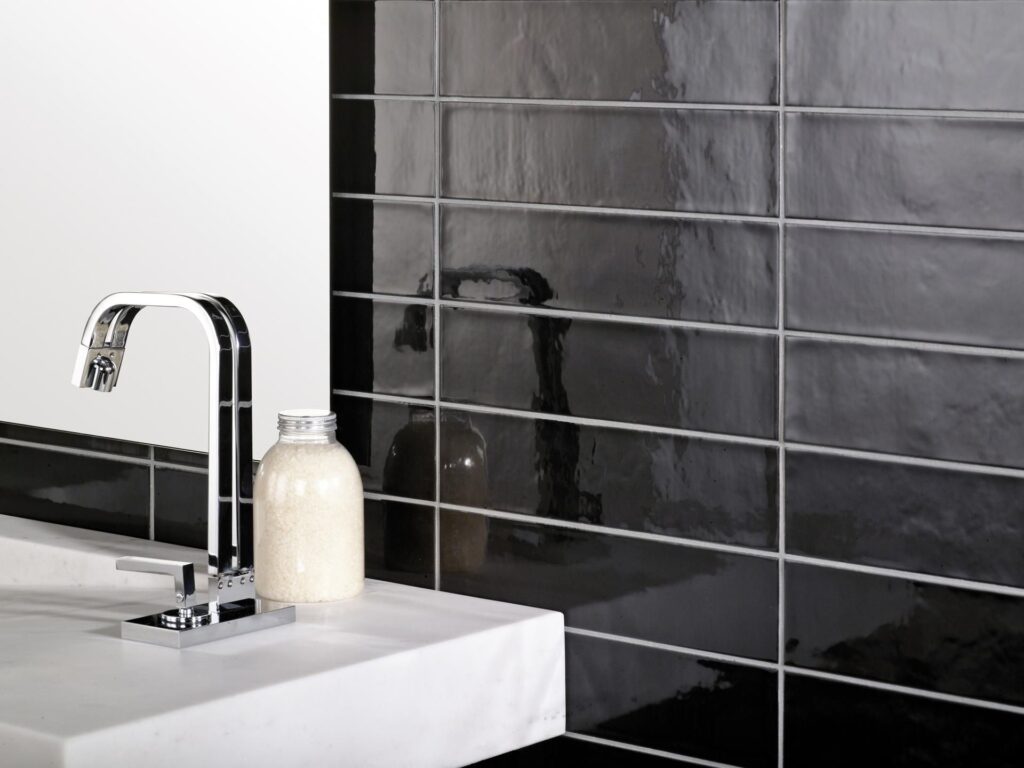
Charcoal, matt black, and deep chocolate tiles can feel luxurious and cosy when lit well.
Best in larger bathrooms or used sparingly in smaller ones to avoid feeling enclosed.
Light & Bright:
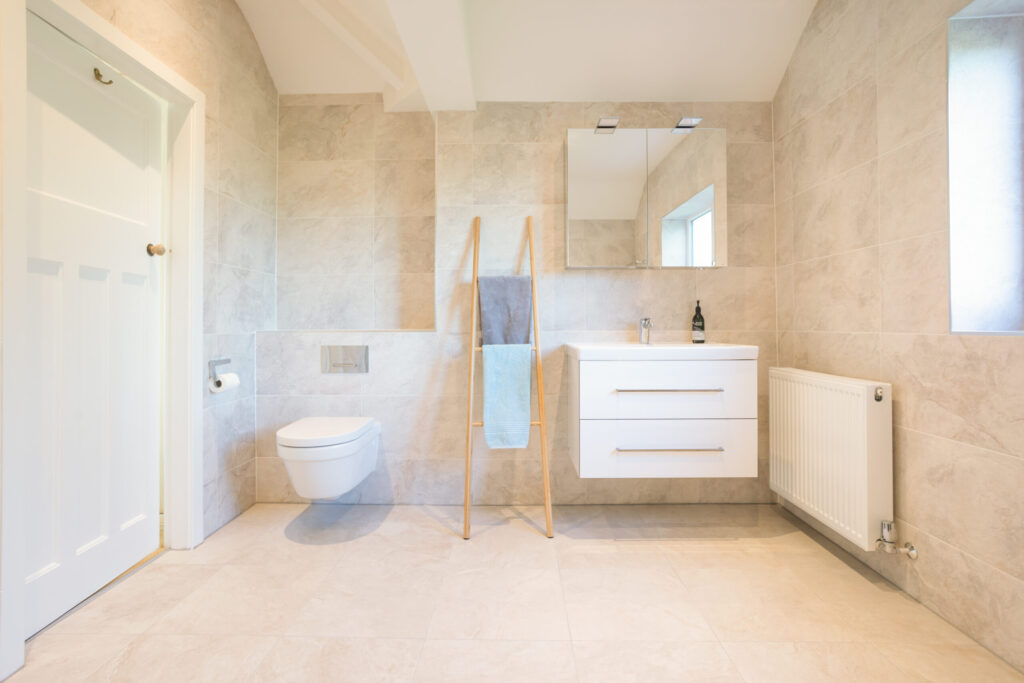
Pale tones with glossy finishes reflect light and make small spaces feel bigger.
Try off-white or pastel-coloured tiles for a softer, less clinical look than bright white.
The same tile can look completely different depending on how it’s laid. Here are some popular patterns:
Clean, modern, and minimal. This layout can look drastically different depending on the orientation you choose for your tiles. Long rectangular tiles laid vertically can draw the eye up and make narrow spaces feel bigger and taller while large tiles laid horizontally can make a room feel wider thanks to fewer grout lines. Look how different they appear below:
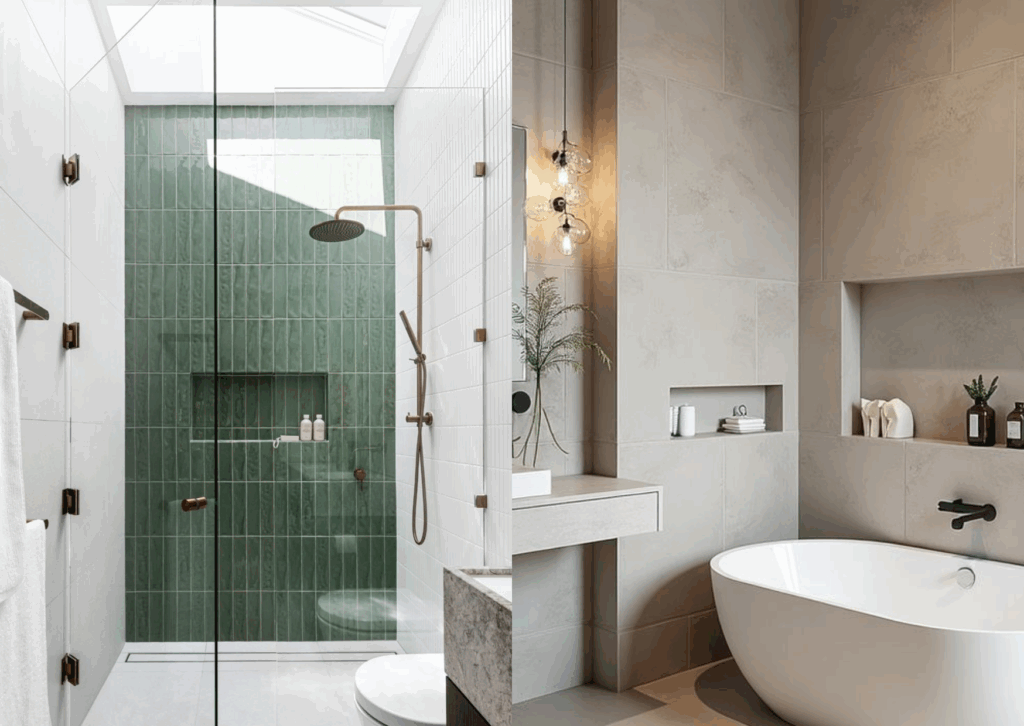
Classic and forgiving, especially for small rectangular tiles. For the last 20 years brick-style layouts have dominated bathroom tile designs but lately we’re seeing it be replaced by the straight stack mentioned above. For uniformity that doesn’t feel too bland, homeowners and tilers will offset by half a tile to give a more relaxed feel.
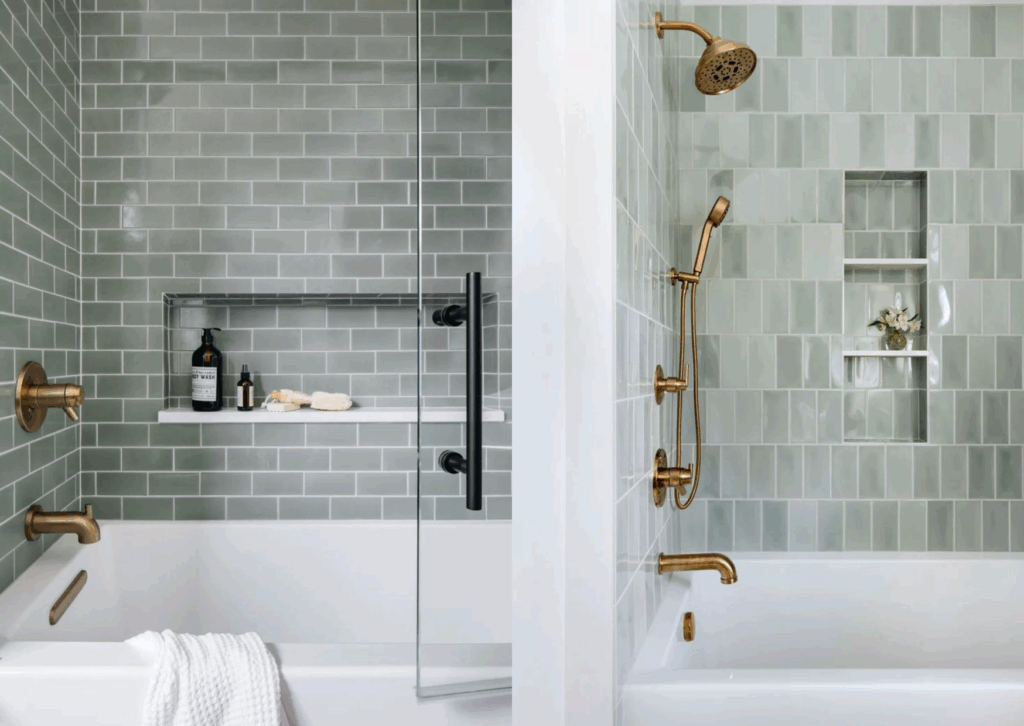
While the herringbone layout feels quite modern, it’s actually been used in interior design for centuries! This eye-catching, elegant pattern is perfect for feature walls or adding wow factor to shower areas. This layout works especially well with narrow tiles.
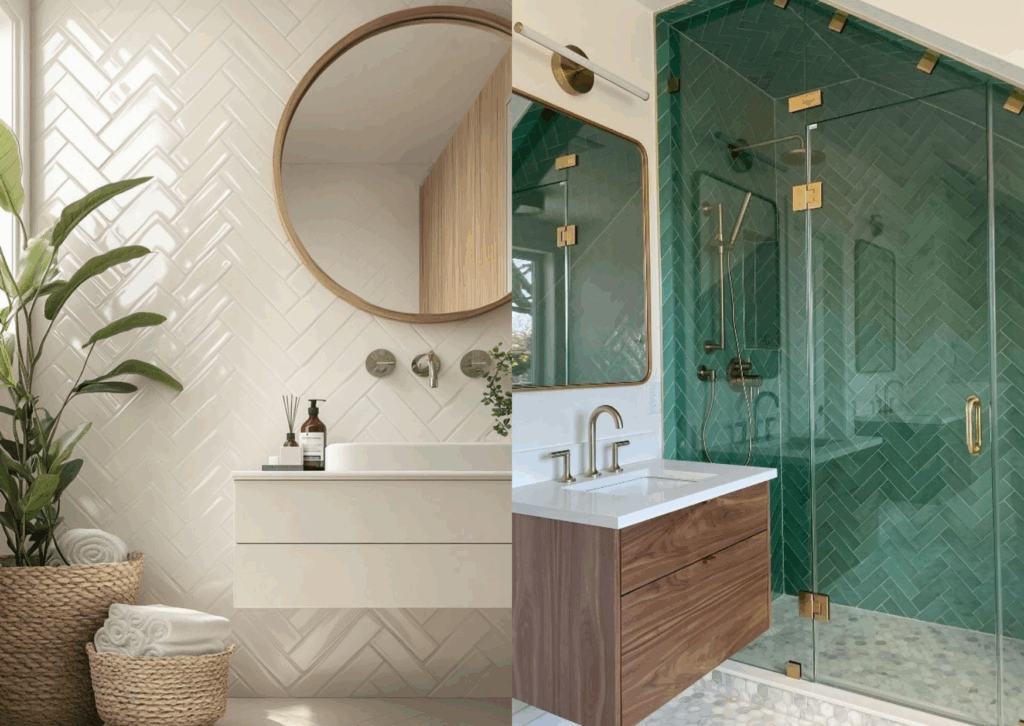
We covered this above but stacking tiles vertically is all the rage in recent years. Combined with the popular kit-kat tiles, this layout can elongate rooms making them feel taller.
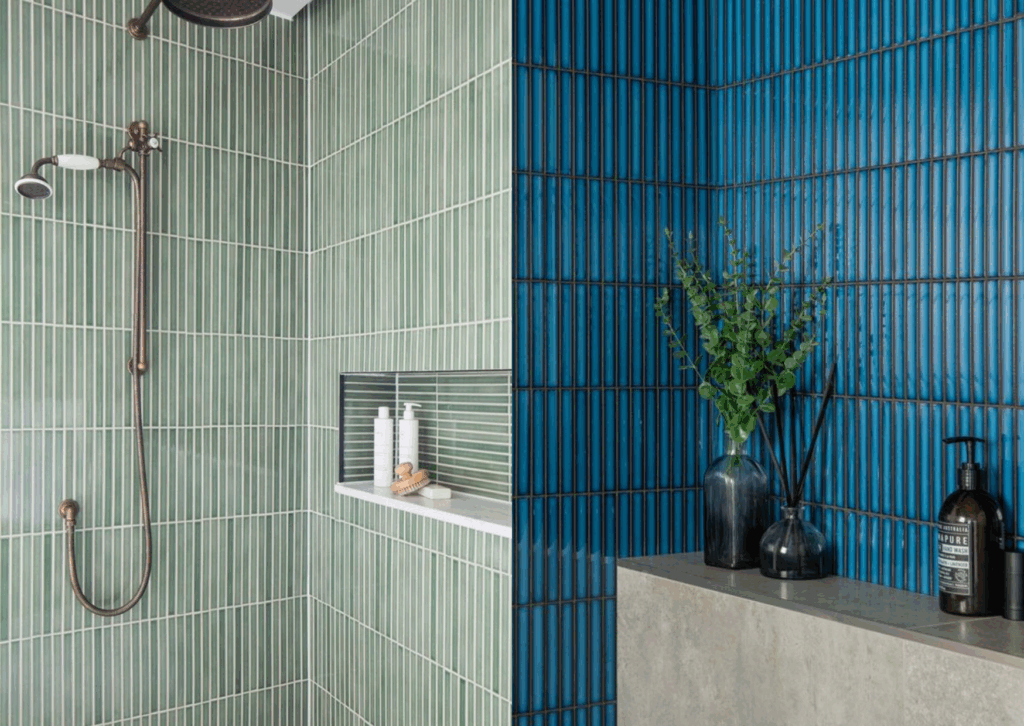
Why stick to one? Try stacking in one zone and herringbone in another for subtle zoning and texture. These bathrooms have perfected multiple tiling styles in the same space.
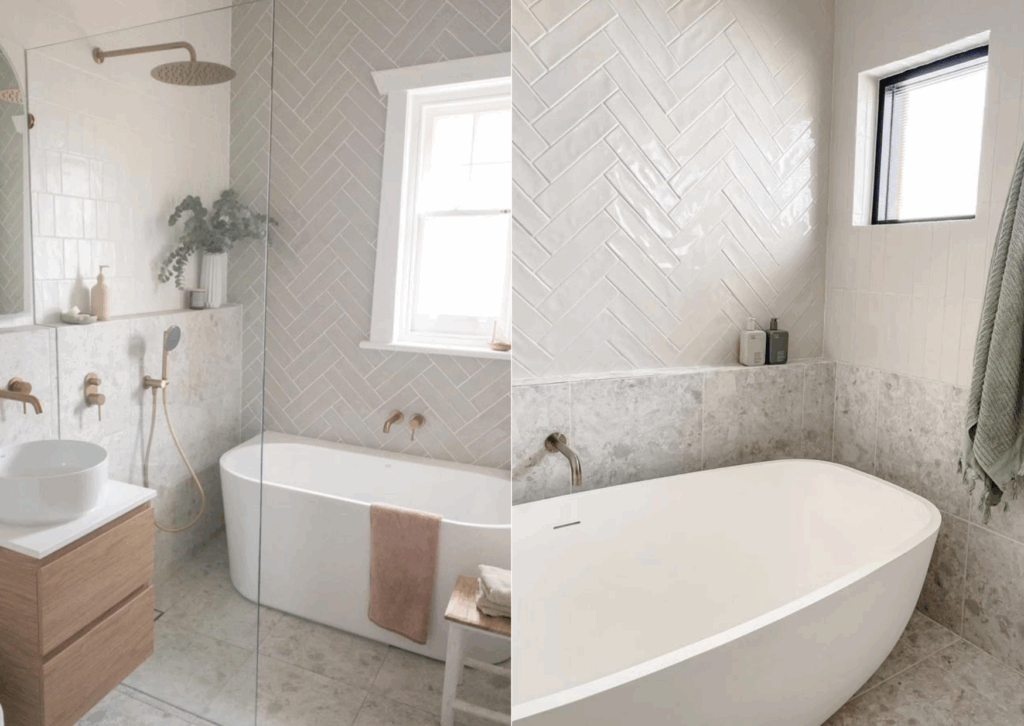
Choosing the right tiles isn’t just about style, they can be a great tool to tackle common bathroom design issues. Here are just a few common issues homeowners have expressed and how our talented designers have overcome them with tiles:
If your bathroom lacks windows or natural sunlight, avoid dark or matt tiles which can absorb light and make the space feel closed in.
Try this:
Glossy or satin-finish tiles that bounce light around
Pale, neutral colours like off-white, cream, or soft grey
Light-reflecting wall tiles paired with a well-lit mirror
Small bathrooms benefit from a light touch when it comes to tile layout and scale.
Try this:
Large-format tiles with minimal grout lines to reduce visual clutter
Vertical or horizontal layouts to elongate walls or create height
Lighter colours and continuous floor-to-wall tiles to open up the space
Tiles can feel cold, especially in winter, but the right setup can make them warm and welcoming.
Try this:
Pair tiles with underfloor heating for consistent warmth
Use warmer-toned tiles like beige or terracotta to soften the feel
Old properties sometimes have walls or floors that aren’t perfectly level, making tiling a challenge.
Try this:
Choose smaller or more flexible tiles like metro or mosaic to disguise imperfections
Avoid highly polished, large-format tiles on uneven floors unless the surface is professionally levelled first
Tiles are perfect for high-moisture areas but not all types perform equally.
Try this:
Use porcelain tiles for showers and floors – they’re dense and water-resistant
Ensure tiles are correctly sealed and use a quality grout to avoid mould
Consider full-height tiling around baths and showers for added protection
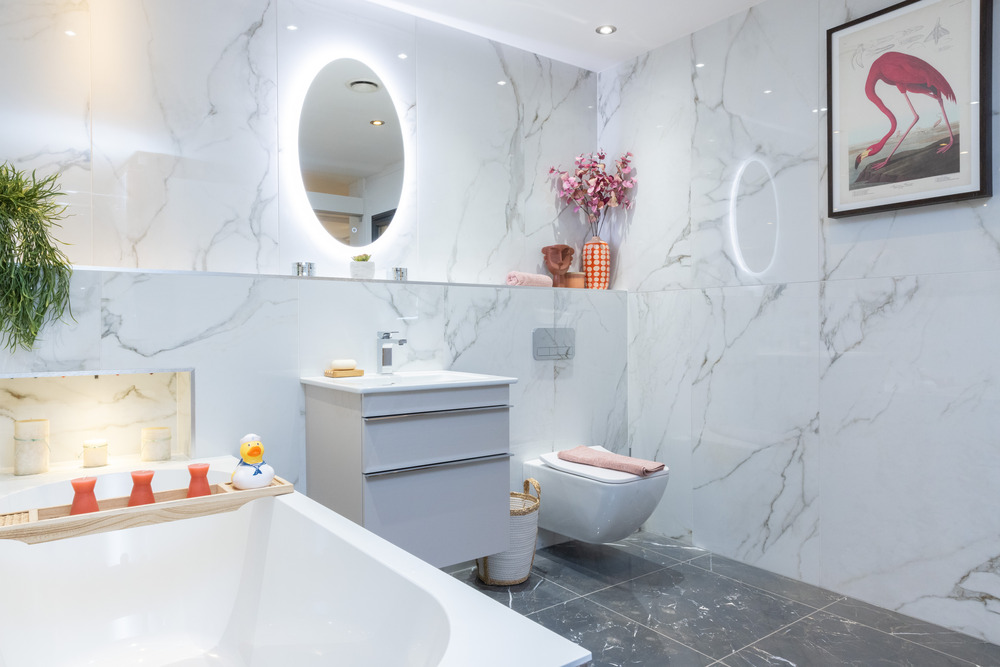
Porcelain and ceramic tiles are most commonly used in bathrooms due to their water resistance and durability. Porcelain is denser and better suited to floors and wet areas, while ceramic is great for walls and lighter-use areas.
Large-format tiles can actually make a small bathroom feel bigger by reducing the number of grout lines and creating a more seamless look. Avoid very small tiles unless you’re using them as a feature.
Absolutely. Mixing tile sizes, colours or finishes can add visual interest and help define different zones, such as the shower area or vanity wall. The key is to keep a consistent colour palette or material tone so it still feels cohesive.
Glossy tiles can be more slippery when wet, especially on the floor. If you’re using gloss tiles, keep them to walls. For floors, choose tiles with a slip rating suitable for wet areas, our designers typically advise that a matt or textured finish is best.
Porcelain tiles are made from finer, denser clay and fired at a higher temperature, making them less porous and more hard-wearing than ceramic. Ceramic tiles are slightly more affordable and easier to cut, making them ideal for walls and decorative finishes.
Grout colour can change the whole look of your tiles. Match it to the tile for a seamless finish or contrast it to highlight the tile pattern. We have a range of grout and tile samples for you to combine and compare in our showroom – click here to arrange your visit.
Most ceramic and porcelain tiles don’t need sealing, but the grout between them might. Natural stone tiles, like marble or limestone, definitely need sealing to prevent staining and water damage.
Use a mild cleaner and soft cloth or mop for regular cleaning. Avoid harsh chemicals or abrasive scrubbers, especially on glossy or delicate finishes. For grout, a mix of bicarbonate of soda and vinegar can help lift grime.
Take the first step to transforming your bathroom.
Visit our showroom today.
We take care of your build